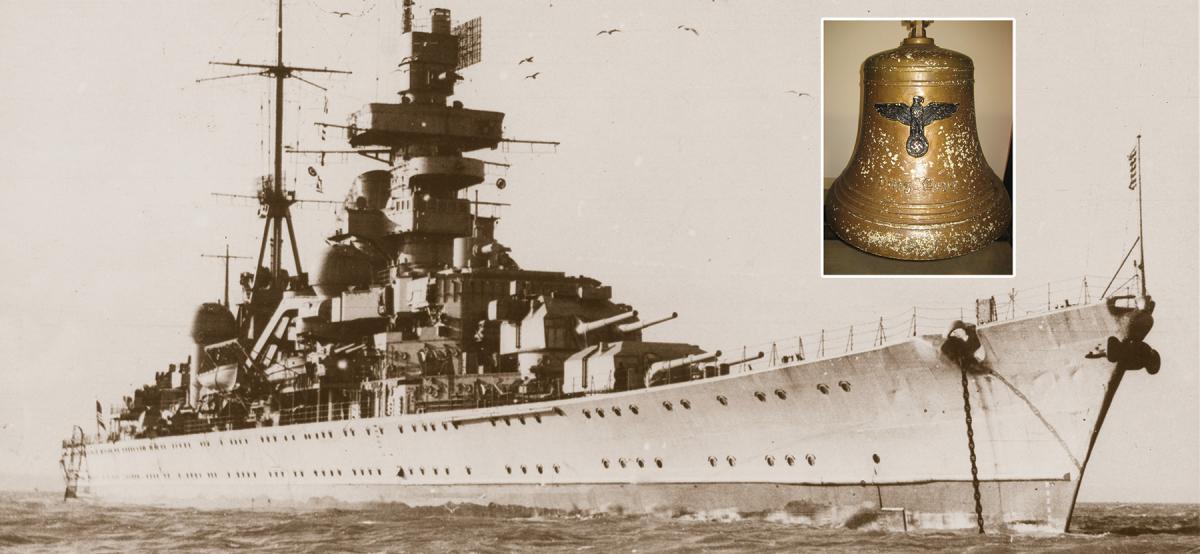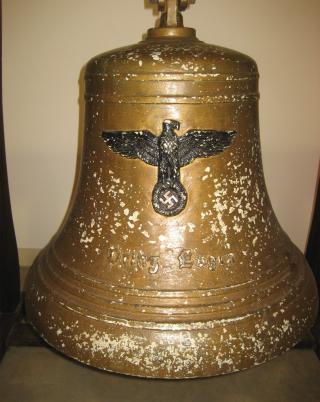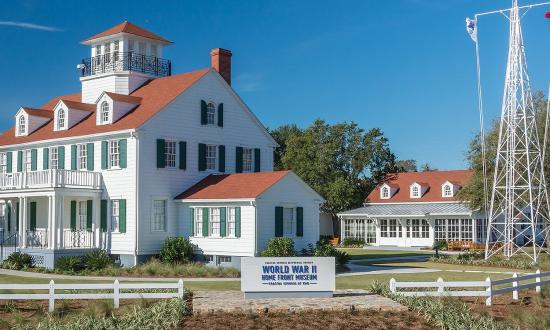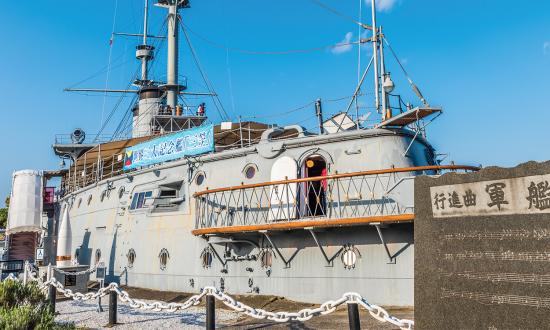Several years ago, at a meeting for the planned Cold War Gallery of the Navy Museum of the United States, I sat surrounded by artifacts and displays that were to become part of the new gallery. Immediately behind my chair was the ship’s bell from the World War II German heavy cruiser Prinz Eugen. As the meeting progressed, I was increasingly drawn to that very important artifact and its significance to both German and U.S. naval histories.
The Prinz Eugen, a participant in two of the most notable events of the war in the Atlantic, was the largest German warship surrendered to the Allies at the end of hostilities, and one of only two major German surface combatants to survive the war intact. In May 1941 during Operation Rhine, the Prinz Eugen escorted the battleship Bismarck on the breakout into the Atlantic that led to the loss of HMS Hood and the epic chase that culminated in the sinking of the Bismarck. In February 1942, the Prinz Eugen accompanied the battleships Gneisenau and Scharnhorst on the daring “Channel Dash” (Operation Cerberus)—a breakout from Brest, France, through the English Channel to the relative safety of German ports. For the balance of the war, the Prinz Eugen served primarily in a training role, and in the closing days of the war, she provided gunfire support on the Eastern Front, hoping to slow the advance of Soviet forces and allow the evacuation of military and civilian personnel to prevent their falling into Russian captivity.
Early in 1946, the Prinz Eugen, with a mixed German/U.S. Navy crew under command of the colorful U.S. Navy Captain Arthur H. “Speedy” Graubart, was brought to the United States for a detailed examination of weapon, sensor, and engineering systems, following which the Prinz Eugen was towed to the Pacific to become a nuclear test target at Bikini Atoll. The cruiser remained afloat after both the Able and Baker blasts and was later towed to Kwajalein Atoll, where progressive flooding eventually caused her to capsize. Today, the wreck lies, still partially visible, at Kwajalein. (Not well known is that the Kriegsmarine referred to its ships in the masculine.)
As a tangible connection to the lessons from those early nuclear weapon tests, the bell was to become part of a museum display that would usher in “The Navy in the Nuclear Age.” The bell was to set the stage for a retrospective of U.S. naval Cold War history, culminating with the fall of the Berlin Wall and the end of the Soviet naval threat that dominated nearly 50 years of U.S. naval strategic thought and ship and combat system development. Today, however, rather than serving as the centerpiece of a meaningful display in a museum gallery, the bell languishes in a government warehouse, awaiting a decision on the future of a new U.S. Navy Museum. It is likely to be a long wait, and little argument remains for retaining the bell. There are only a few in the United States for whom this bell has a direct meaning; almost all of those generations are gone. Further, the Prinz Eugen never engaged U.S. forces directly; unlike submarine U-505, which is on display at the Museum of Science and Industry in Chicago, she is not a war prize captured on the high seas.
There are, however, likely many descendants and perhaps even a few surviving members of her German crew for whom this bell would have very tangible significance. This important piece of history deserves a better fate, and it should return home to an appropriate place, perhaps to the Marineschule (Naval Academy) in Mürwik, where a dedicated Prinz Eugen exhibit has been established, or to the German Naval Memorial at Laboe, near Kiel.










